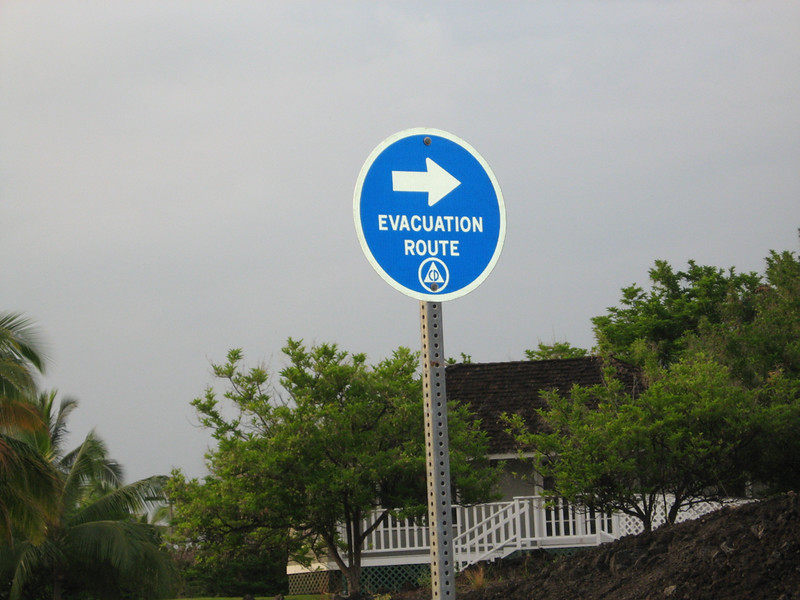
photo by David Hepburn
Historic old cities, cutting edge metropolitan and global giant companies symbolize modern Japan. On the other hand, Japan is known for as a country that is likely to experiences many disasters. The greatest concern in terms of disaster in Japan is earthquakes. Japan has been experiencing mid-to-large scale earthquakes across the country every few years, and you cannot avoid this as long as you reside in Japan. In addition, flood disasters have been a serious issue in recent years. Floods tend to occur during summer and autumn, and there are flood risks anywhere in Japan. Of course, Tokyo is not an exception. Therefore, each city government of Tokyo publishes hazard maps in case of emergency events.
Flood Hazard Map
One of the disasters that is increasing in Japan is flood due to concentrated heavy rain and typhoons. Floods tend to occur particularly during summer and autumn, causing serious flood damages and landslide disasters across the country. Also, most major cities of Japan are located directly on the se with many areas called land with elevations below sea level (land levels are below sea level at full tide). In Tokyo, Koto-ku, Edogawa-ku, Sumida-ku and Katsushika-ku are lands with elevations below sea level. However, places other than these also have flood risks, Therefore, each city government of Tokyo publishes flood hazard map for residents. The following information is included in the hazard map.
- Behavior standard by disaster level
- Evacuation route when a flood occurs
- Estimated immersion level in the 23 wards of Tokyo
- Useful information sauce when a flood occurs
Flood hazard maps are available on each city government’s website. Printed hazard maps are available at a council office and disaster prevention office. Also, you can browse the list of city council websites that publish the flood hazard map of different locations to see maps around your home, school or work place.
Earthquakes Evacuation Map
Japan is located on the boarder where four plates meet, thus there are many active faults that trigger earthquakes all over Japan. In fact, very minor quakes of intensity 1 -5 occur all the time on a daily basis. However, we should pay special attention to large earthquakes such as the Great Hanshin-Awaji Earthquake and the Great East Japan Earthquake. Significant disruptions that can be threat to life may occur, therefore, it is very important that you know evacuation routes and location of the nearest evacuation center.
Each city government of Tokyo publishes a map of Temporary stay facilities and Shelters in case of earthquake events. It is useful to check the nearest evacuation sites around your home, school or work place. A list of disaster prevention counters of city governments is available on the Disaster Prevention Information website.
Also, you can search temporary stay facilities, shelters, water supply points and medical institutions in Japanese, English, Chinese and Korean on the Tokyo Metropolitan Disaster Prevention Map.
Disaster Preparedness Tokyo Book
“Disaster Preparedness Tokyo” is a book to inform people how to prepare for an earthquake directly beneath the capital which is expected to hit Tokyo within next 30 years. Information on preparation for emergency events, how to act right after an earthquake occurs or when the tremors of the earthquake stop, do’s and Don’ts at a shelter and many other situations are described with illustrations in this book. Free PDF version is available on the Disaster Prevention Information website, and printed books are available at book stores nationwide for 130 yen. Translated version (English, Chinese and Korean) are also available, but only at limited places (click here).
Information Sauce in Case of Heavy Snow
Normally, it doesn’t snow very often in Tokyo, and we hardly see snow on the ground. Therefore, the infrastructures of Tokyo are not designed to be prepared for snow. This is because it is not practical to spare a huge amount of money to prepare for snow that hardly fall. That means, once it snows, the infrastructures of Tokyo, especially public transport, stops working all of a sudden. Tokyo doesn’t really experience “disaster” due to heavy snowing, however, means of transportation may be disturbed because of a little snow falling. Therefore, it is important to check service status of public transport.
The Disaster Prevention Information Transportation Link
Better safe than sorry
Japan is a country that experiences many disasters. In recent years, the number of flood disasters due to heavy rain is increasing and attracting a huge concern. The most important thing at the time of disaster is to know correct knowledge and evacuate safely. In order to do so, information such as appropriate behavior standard and location of shelters around your home, school or work place is crucial. The city government of Tokyo provides necessary information by assuming many different situations to call for attention. Disasters are unforeseeable. Therefore, start accumulating disaster prevention information now, so that you can act and evacuate safely in an emergency event.
